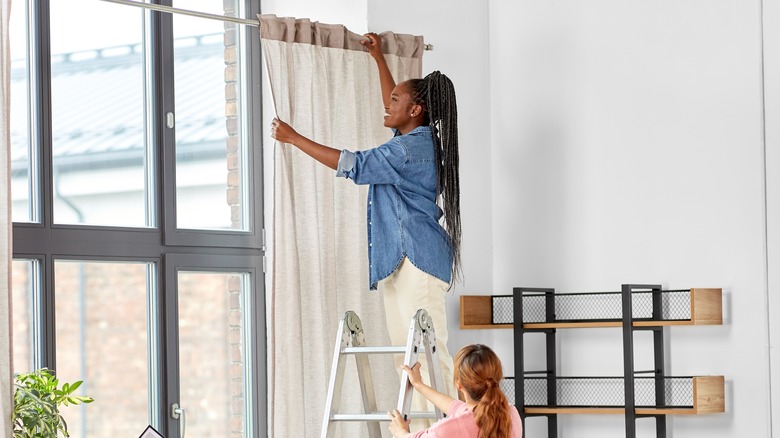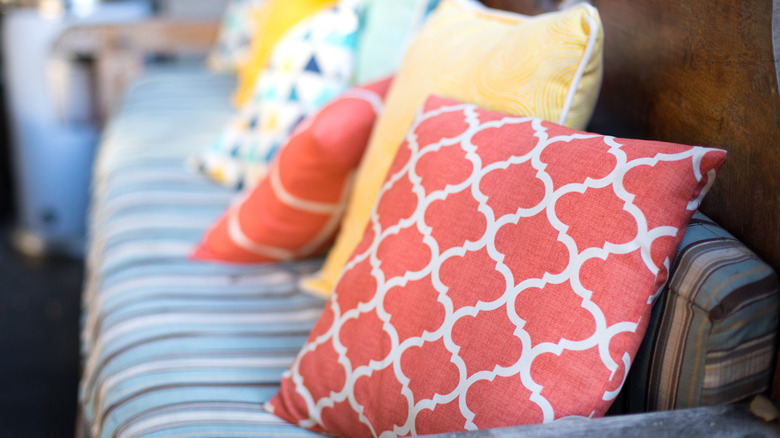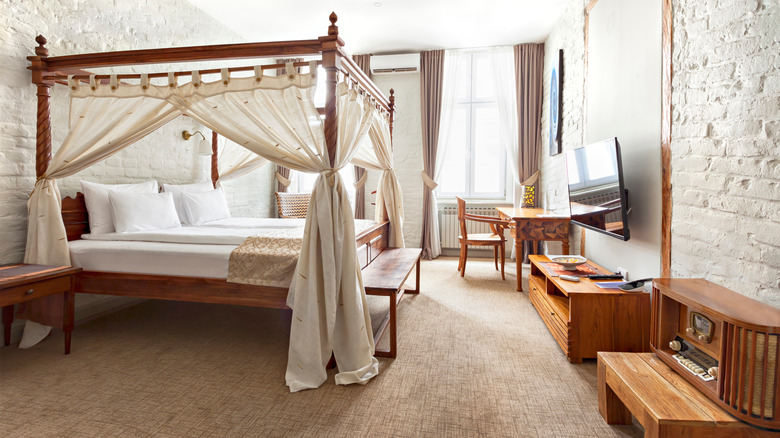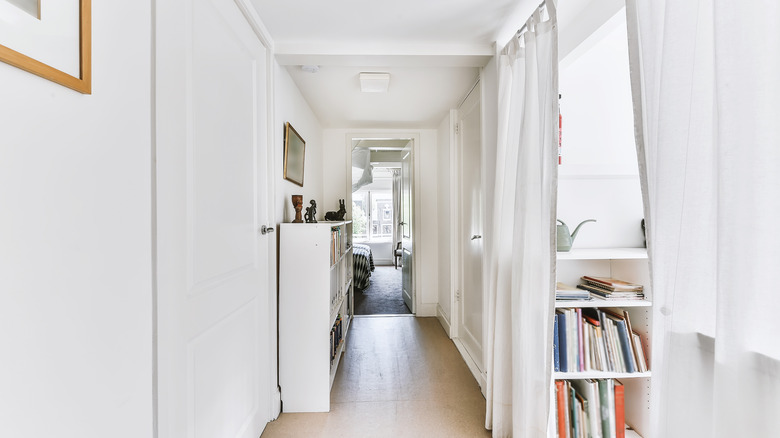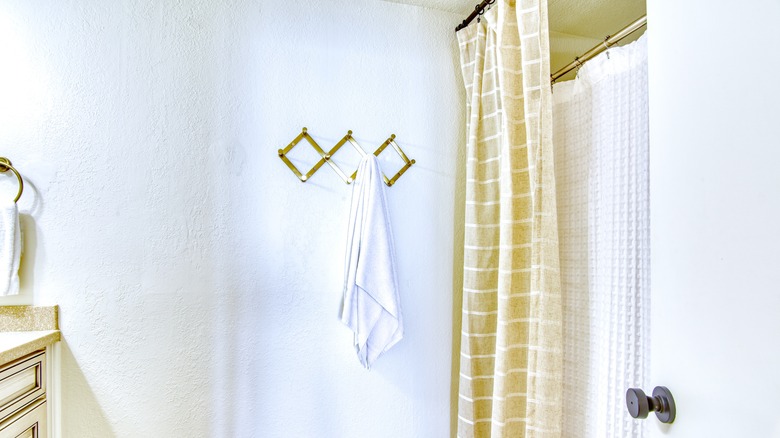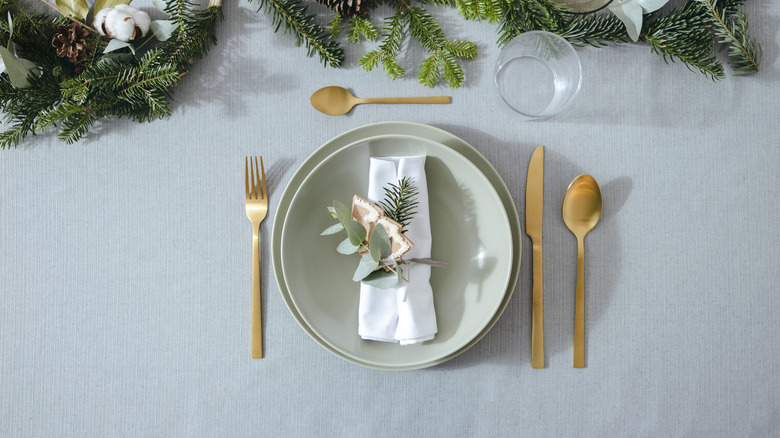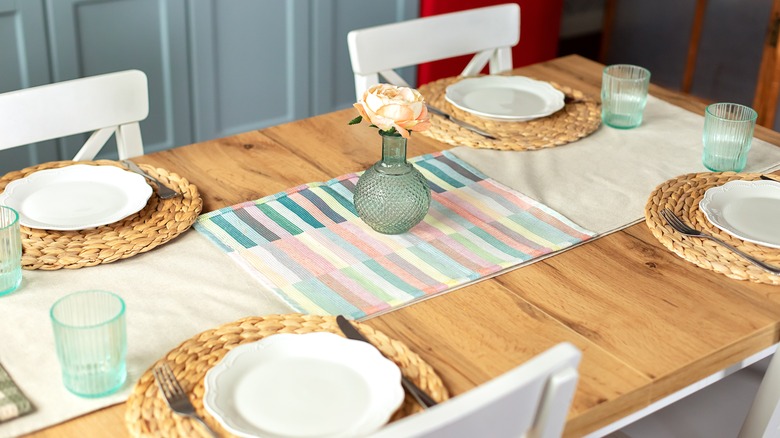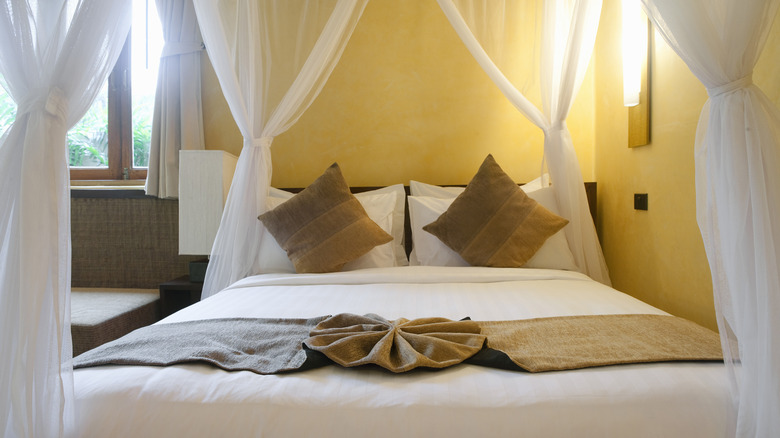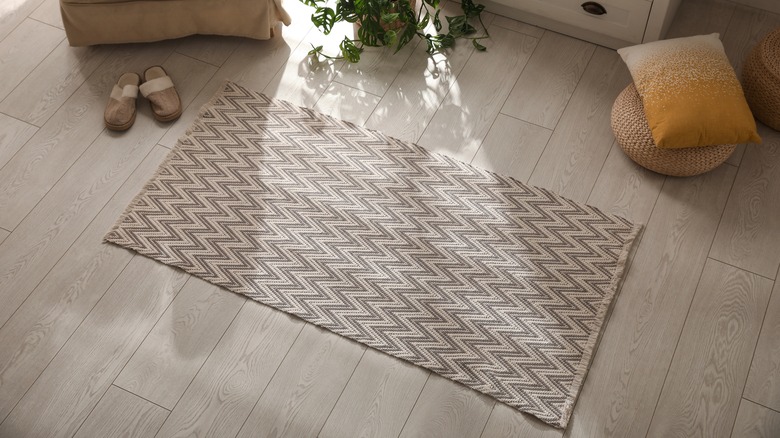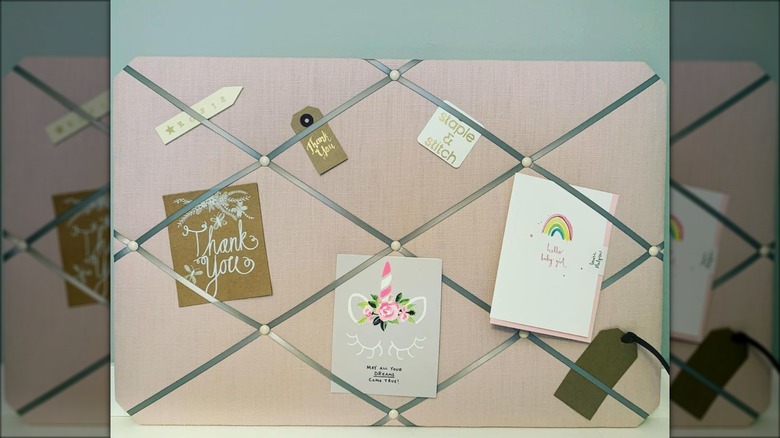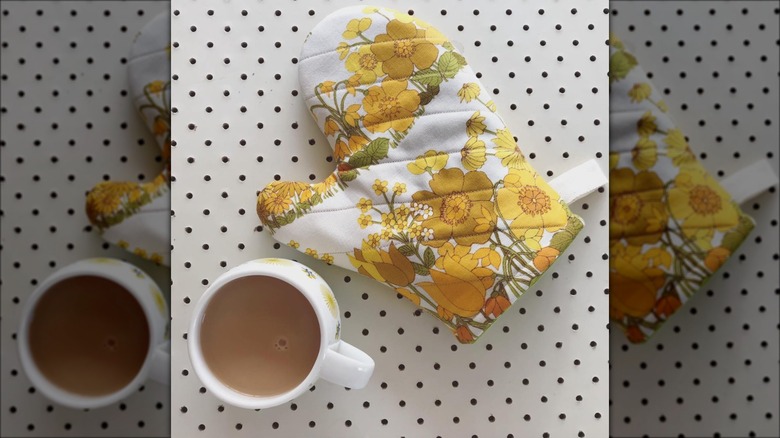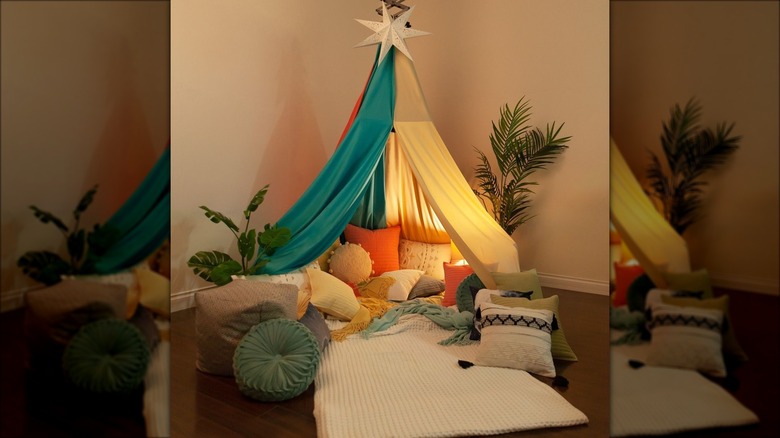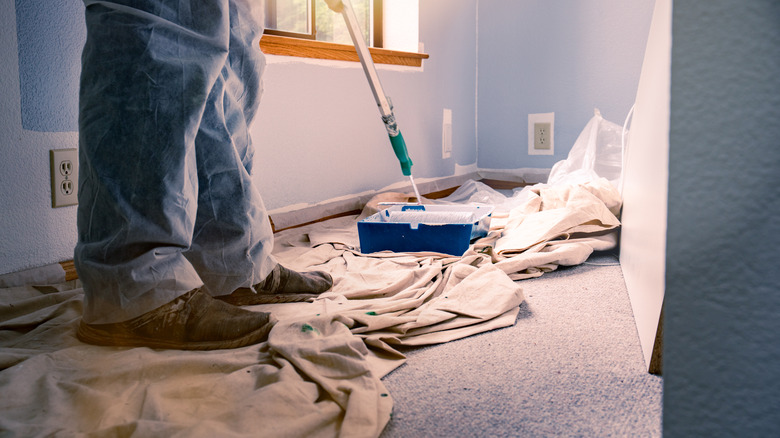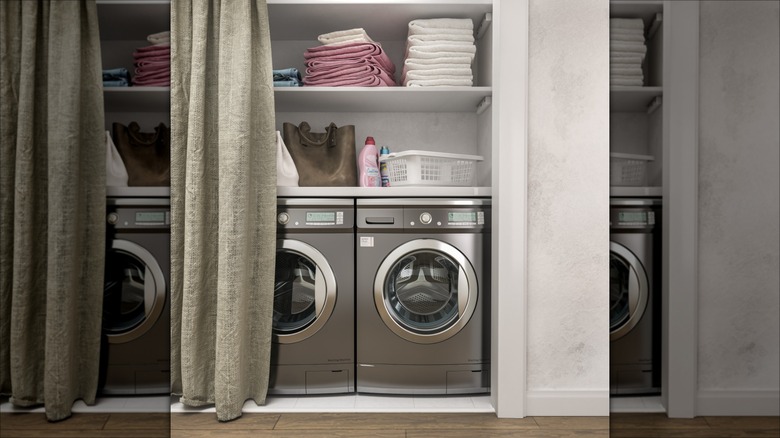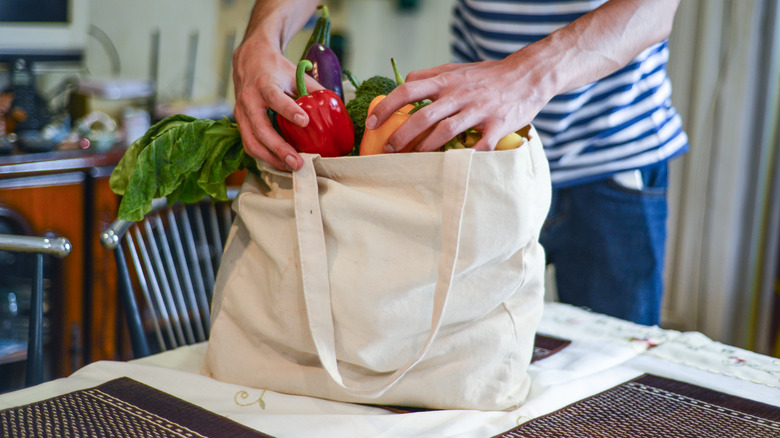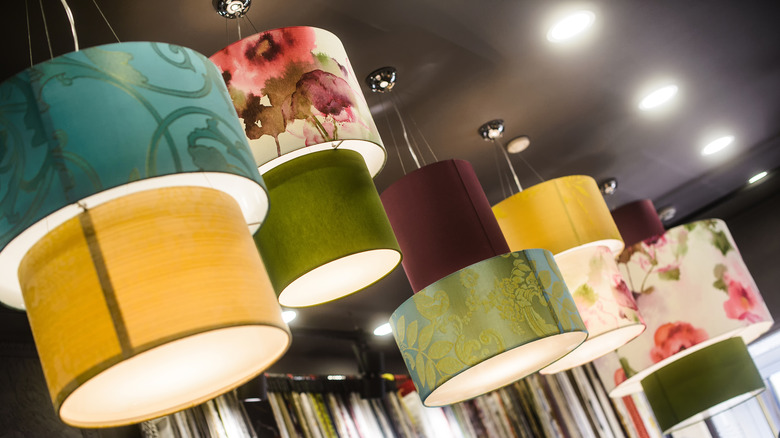16 Smart Ways To Repurpose Old Curtains Around Your Home
Curtains obviously serve as a way to block out unwanted sunlight and increase the level of privacy we have in our homes, but they're also one of the biggest and simplest ways to change up the look and feel of a space. Because of this, it's likely that you've changed your curtains a handful of times over the years, switching them out to better reflect current trends or your own personal style. After making the switch, however, it can feel wasteful to toss out something that was likely both fairly expensive to purchase and still in good condition.
This is where the art of repurposing and upcycling comes in. In essence, curtains are just large strips of fabric with the occasional pocket or loop at the top to allow them to hang on a rod. They come in just about every fabric under the sun — thin, natural materials like cotton; thick, luxurious silk; and even sturdy, synthetic blends designed for durability — so they're perfect for a wide range of projects, and the already-finished edges mean you might not even have to pull out a needle and thread in some instances. Basically, old curtains can easily be transformed into just about any fabric-based project you put your mind to, oftentimes making your job even easier than if you were to just take a trip to the fabric store.
Throw pillow covers
Throw pillows are a great way to spruce up your seating and make it more comfortable, but many of the options on the market are shockingly expensive. If you still like the print or color of your old curtains but would prefer them in smaller doses, turning them into throw pillow covers can present the perfect solution. Even if you don't have much experience, pillowcases are a fantastic beginner sewing project, especially if the edges on your curtain are already finished. Once your cover is sewn, fill it with a store-bought insert, stuffing, fabric scraps, or even another throw pillow that needs a facelift.
Bed canopy
If you feel like your bedroom has been lacking coziness but you're not ready for a full-room revamp, consider creating a canopy bed. While this luxurious setup is most frequently associated with resorts, there's no reason you can't incorporate that same luxury into your space using some old curtains. If you already have a four-poster bed, you don't have to do much work to create the look. If this isn't the case, however, you can easily create your own canopy to hang from the ceiling with the help of a hoop frame. Just attach your curtains, secure them to the ceiling, and drape the fabric around your bed.
Room divider
Homes are obviously designed with functionality in mind, but sometimes their layouts don't seem to mesh with your specific needs. Whether you're looking for some more privacy in a studio apartment or you want to visually separate a space that feels too open, using a curtain as a room divider is a simple and low-maintenance way to get the job done. If you have the ability, installing a curtain rod directly into the ceiling can give you the maximum amount of flexibility when it comes to placement, but you could also utilize tension rods between walls for a rental-friendly DIY that won't jeopardize your deposit.
Shower curtain
One of the simplest ways to repurpose an old curtain only requires you to take it into a different room. Plastic shower curtains and shower curtain liners are meant to withstand the constant flow of water, but if you already have one of these installed, the outer decorative curtain can be made out of just about any fabric. If your curtain is wide enough and has loops along the top, it can be hung straight on the shower curtain rod like any other shower curtain. If your curtains are too narrow, however, you could add two to cover the space and create an interesting layered look.
Cloth napkins
Cloth napkins are an easy way to upgrade a place setting, but if you don't already have some on hand, shelling out money on something that's just a square of fabric can seem silly. If you're looking for a frugal replacement, we have good news: curtains are just pieces of fabric, too. After giving them a thorough wash to remove any dust, cut down your curtains into squares, then hem the edges or leave them raw for a more rustic look. If your curtains were large enough, you should be able to make a full matching set for your next dinner without issue.
Table runner
Napkins might just be squares of fabric, but that transformation still requires a bit of work to pull off. If you want a way to use your curtains in your dining room that's truly low-effort, try using them as a substitute runner. It's still likely a good idea to give your curtains a wash to clear away any grime they've collected since they've been hanging, but, after that point, you're pretty much ready to go. Of course, this idea will likely work the best with narrower-style curtains, but there are no hard and fast rules when it comes to how to decorate with table runners.
Bed scarf
Unless you have a particularly special set, it's unlikely that your curtains are made of a material you want to cuddle up under on the couch or in bed. With that being said, however, curtains can still make for a solid addition to your bedding. If you've stayed in a hotel recently, you've likely encountered a decorative piece of material lying across the foot of the bed called a bed scarf. Their primary job is just to spruce up the space, but, at home, a bed scarf can be both decorative and act as a protective layer against pet fur or objects you place on your bed.
Area rug
Rugs help to make spaces more comfortable, add some visual interest, and even help to muffle sound, but the options on the market are often low-priced and simple or more intricate and significantly more expensive. An easy way around this issue is by turning a thick curtain into an area rug. It might seem like a bit of a stretch at first, but when paired with a cushioned mat, a curtain made of durable material can certainly serve the same function as a low-pile rug. As an added bonus, you can even remove the curtain and toss it in the washer when it needs a cleaning.
Memo board
Memo boards already afford you a high level of customization — they can be used to preserve keepsakes, keep track of important cards, or display family photos — but you can take that benefit to the next level by making your own. Thicker curtain materials, like brocade, linen, and even velvet, can make for the perfect fabric backing on a memo board. To do this project yourself, you'll need a piece of plywood, fabric, batting, ribbon, and pins. It might seem a bit intimidating at first, but with some clever stapling and pinning, you'll be able to create your own custom board over the course of an afternoon.
Oven mitts
Sometimes, the curtains we use carry some sort of sentimental value, whether they're a vintage print that reminds you of your childhood, or a set inherited from a beloved family member or friend. In these cases, it's likely that you want to hold on to the fabric, even if it's far from your personal style or clashes with your interior design. If it's not too intimidating to break out the fabric scissors, curtains like this can provide a fantastic opportunity to be transformed into something smaller that you'll routinely use, like an oven mitt. This way, you'll still have that sentimental reminder without sacrificing style.
Children's fort
If you're looking for a way to upgrade your child's play space, a classic blanket fort is almost always a good option. The problem? While they're fun to build, classic blanket forts are often makeshift and flimsy, meaning they can only stay up for a few days at most. To create something more permanent without sacrificing all of the bedding in the house, consider building a fort out of curtains. Try your hand at building different shapes until you find one that's cozy. Experiment with layering different fabric textures, and even try your hand at incorporating some LED lights or lamps for a truly magical look.
Drop cloth
Most of these ideas involve transforming your old curtains into something that you'll display and use elsewhere in your home, but if you're truly tired of their look or they're damaged beyond saving, there are still ways you can utilize these pieces of fabric before tossing them in the garbage. DIY paint projects, whether you're completely revamping a room or just spray painting a vase, can get messy, and it's not uncommon to need a layer of protection. Old curtains can do the job. Simply lay some down over your furniture, flooring, or table to create a barrier between your surface and whatever messy supplies you're working with.
Block off doorways
In some spaces, a traditional door simply doesn't work, whether that's because the area would be too cramped with the addition of something that has to swing outwards to open or because it would be annoying to have to constantly open and close something to pass through. If you still want to block off the area, however, you have another option: a curtain. Old curtains can make for fantastic door substitutes in areas where you would rather not go through the whole installation process, and they can even add a welcome pop of color or pattern to a boring wall.
Reusable bag
If you've perfected the skills necessary to turn your old curtains into throw pillow covers, you're only one step away from learning how to make your own sturdy tote bags out of the same materials. Cut down your fabric, sew three sides like you would sew a pillow cover, and then leave the fourth side open. Cut one or two more thin strips of fabric, then fold them in half and sew them to make handles. Attach the handles to the inside of the open edge of the bag, and you've created a simple tote that you can use to transport groceries or simply haul your daily essentials.
Refresh old lampshades
If you're searching for a way to give your old lampshade a new look, why not utilize your old curtains and upcycle two items at once? Most fabric lampshades are essentially just pieces of fabric pulled taught over a simple wire frame, so completely changing their look is as simple as swapping this fabric layer with something that better aligns with your taste. If you're not all that confident in your reupholstering abilities, however, you could also decoupage the lampshade with your curtain fabric, though the final product will likely have a more opaque look than if you were to use the first method.
